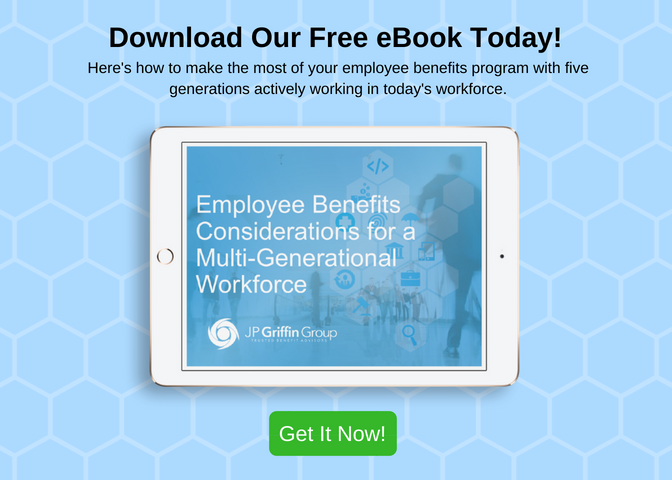
Maintaining a competitive edge often comes down to retaining a talented workforce. The growing popularity of so-called “portable” employee benefits, such as Health Savings Accounts (HSAs), certainly hasn't made this any easier. Employers trying to entice workers to remain loyal may want to focus their efforts on providing benefits which are simply too good to surrender. Offering benefits that accrue significant value over time, or improve with tenure, will help keep employees from abandoning that progress for greener pastures, lest they have to start over someplace else.
How the ACA Impacted Employee Retention
Prior to the passage and implementation of the Affordable Care Act (ACA) there was considerably less job mobility for many Americans with pre-existing health conditions. The moment insurance carriers were barred from discriminating based on pre-existing conditions, the need for individuals to stay with a company for insurance reasons essentially vanished. Many employees who were previously stuck in their jobs for fear of losing benefits were now free to explore other opportunities.
Similarly, many budding entrepreneurs set off to start their own businesses while acquiring individual health insurance via the ObamaCare exchange or through other means. One could argue that this new freedom was a benefit to both employers and employees — after all, who really wants an employee who is sticking around just because of benefits? Nevertheless, this new found “employee mobility” has made the search for "sticky" benefits all the more important.
The High Cost of Employee Turnover
When employees leave, it costs businesses a lot more than just a temporary inconvenience. According to a 2016 study by the Society for Human Resource Management (SHRM), the average cost for companies to find a replacement is $4,129.
Turnover costs encompass many factors, including costs related to recruiting, interviewing and training. In addition, it takes companies an average of 42 days to fill an open position, which means 42 days of lost productivity while a position goes unfilled.
The figures people associate with the cost of turnover are admittedly variant and debatable. In fact the SHRM’s data seems quite conservative when compared to Josh Bersin’s estimates - he thinks replacing an employee can cost a business up to two times the employee’s annual salary — and he’s not the only one with this school of thought.
The Center for American Progress conducted a meta-analysis revealing that the higher the required job skills, the more expensive it is to fill a vacancy. The average economic cost of finding a replacement for a lower level worker was about 5.8 percent of one year’s compensation for that position, whereas a highly skilled worker could cost up to 213 percent.
Employee Benefits That Stick
In light of how much employee turnover costs businesses, savvy employers and their benefit brokers build their benefit programs in such a way as to make the decision to leave the company a more difficult one for tenured employees. Here are some examples of benefit concepts designed to improve over time:
- Escalating Bonus Structures with Tenure - Generally speaking, this means that the longer someone is with a company, the larger the bonus. For example, employees with three years of service might receive a smaller bonus (as a percentage of base or a fixed dollar amount) than those who have been around longer.
- Escalating Paid Time Off with Tenure - Most companies grant more paid time off commensurate with greater lengths of service. If new hires start off with ten days of vacation, perhaps employees with three or five years of service get 15 days, or an additional day off for each year of service up to a certain amount.
- Stock Options with Vesting Periods - Offering employee stock options (ESOs) with a vesting period will guarantee that only employees who have been with a company for an extended period of time will get to own stock. Once a person has a financial interest in the success of a company, they are far less likely to leave it.
- 401(k) Matching Contributions with Vesting Period - This concept is similar to stock options with vesting periods in that an employee must work for the company for a certain length of time to fully vest in the company's 401(k) match. In many cases, this period is far shorter than with stock options. The amount of company match can also be designed to be escalating. For example, some companies offer a smaller percentage match in the early years which then grows over time.

- Graduated Office Improvements - As people ascend through the ranks, it's not uncommon for their offices to get larger and/or better situated near a view. Depending on your office environment, this isn’t always possible. If you are space challenged, consider office improvements such as a stand-up desk, a fancy ergonomic office chair, new furniture, a private printer, a paid parking spot, or an office near a natural light source.
- Title Changes - Sometimes, a simple title change can satisfy someone’s desire to feel more appreciated within their current company. However, with title changes come salary increases, which can backfire if you aren't careful. Giving out “Director” and “Vice President” titles liberally can decrease the value of said positions, which can in turn, lower their value, so tread lightly here.
- Administrative Support - When employees reach a certain level or position in the company, consider providing them with an assistant who can help alleviate some of their more mundane administrative tasks.
Other Benefits To Consider
There are a multitude of other benefits for employers to consider when employee retention is top of mind. Many of these don't require complicated vesting and escalation rules commensurate with employment longevity.
Flexible Schedules
Studies show that these days, employees are looking for benefits that allow them to achieve an ideal work-life balance. For employees with children, some are even willing to put flexible hours ahead of salary, taking a pay cut if it means spending more time with their children and spouse. This is something employers should keep in mind, as nearly half of two-parent households feature two parents who work outside the home. Many large companies have started responding to these employee preferences. Amazon switched to a 30-hour work week, and Netflix offers one year of parental leave to its workers — and once a worker grows accustomed to a flexible schedule, it’s very hard for them to switch to a more rigid schedule.
Enhanced Health Benefits
With more and more employers pushing HDHPs (high deductible health plans), employers who offer more traditional PPO plans with reasonable premiums and low deductibles are becoming a rarity. Fully subsidized premiums by the employer are essentially nonexistent. A Harvard Business Review survey shows employees value health, vision and dental insurance above all other benefits, with 88 percent saying they take these offerings into consideration before accepting a job. Flexible hours, vacation time, and work-from-home options also rank high among the most desired benefits.
Unique Employee Benefits
Additionally, employees value benefits that are truly unique. If you’re big on benefits but low on resources, there are many ways to beef up your existing benefits package. Simple ideas like free food, continuing education, laundry services, discounts on products or services, and even a new baby fund or assistance with adoption services can take your employee benefits package from something standard to something that keeps current employees happy (and loyal) for years to come.
Employee Benefits Can Shape Company Culture
While many factors feed into company culture, employee benefits stand out as one of the most significant because they communicate the intrinsic values of the business; your benefit offerings speak directly to what leadership deems as important.
It's therefore important to keep your company's culture goals in mind when cultivating your employee benefits package. Offering meaningful benefits will not only attract new talent to your company, but they’ll help keep current employees from looking for greener pastures.
What types of employee benefits do you offer which aid in workforce retention? Leave us a comment below or contact us. We’d love to hear from you!

















